 W
WAries is one of the constellations of the zodiac. It is located in the Northern celestial hemisphere between Pisces to the west and Taurus to the east. The name Aries is Latin for ram, and its symbol is , representing a ram's horns. It is one of the 48 constellations described by the 2nd century astronomer Ptolemy, and remains one of the 88 modern constellations. It is a mid-sized constellation, ranking 39th overall size, with an area of 441 square degrees.
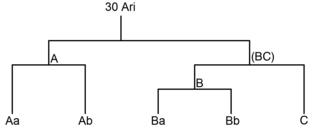 W
W30 Arietis is a 6th-apparent-magnitude mulitple star system in the constellation of Aries. 30 Arietis is the Flamsteed designation. 30 Arietis A and B are separated by 38.1″ or about 1,500 AU at a distance of 130 light years away. The main components of both systems are both binaries with a composite spectra belonging to F-type main-sequence stars, meaning they are fusing hydrogen in their cores. The 30 Arietis system is 910 million years old, one fifth the age of the Sun.
 W
W35 Arietis is a binary star in the northern constellation of Aries. 35 Arietis is the Flamsteed designation. It is approximately 340 light-years distant from the Earth, based upon an annual parallax shift of 9.51 mas. This star is visible to the naked eye with an apparent visual magnitude of 4.64.
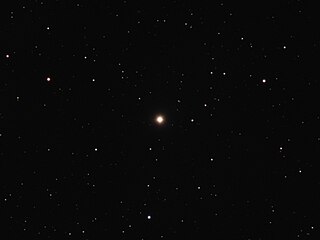 W
W39 Arietis, officially named Lilii Borea, is a star in the northern constellation of Aries. It is visible to the naked eye with an apparent visual magnitude of +4.5. The distance to this star, as determined from an annual parallax shift of 19.01 mas, is approximately 172 light-years.
 W
W41 Arietis is a triple star system in the northern constellation of Aries. With an apparent visual magnitude of 3.63, this system is readily visible to the naked eye. It has an annual parallax shift of 19.69 mas, which indicates it is at a distance of 166 light-years from the Sun.
 W
W54 Ceti is an older Flamsteed designation for a star that is now located within the constellation boundaries of Aries, the Ram. In the present day it is known by star catalogue identifiers like HD 11257 or HR 534. At an apparent visual magnitude of 5.94, it can be seen with the naked eye. The distance to this star, as determined using parallax measurements made during the Hipparcos mission, is approximately 139 light-years, give or take a 6 light-year margin of error. It is located near the ecliptic and hence is subject to occasional occultation by the Moon.
 W
WBD+20°307 is a close binary star system approximately 300 light-years away in the constellation Aries. The system is surrounded by a dusty ring.
 W
WBeta Arietis, officially named Sheratan, is a star system and the second-brightest star in the constellation of Aries, marking the ram's second horn.
 W
WDelta Arietis, officially named Botein, is a star in the northern constellation of Aries, 1.8 degrees north of the ecliptic. The apparent visual magnitude is 4.35, so it is visible to the naked eye. It has an annual parallax shift of 19.22 mas; corresponding to a distance of about 170 ly (52 pc) from the Sun.
 W
WEpsilon Arietis is the Bayer designation for a visual binary star system in the northern constellation of Aries. It has a combined apparent visual magnitude of 4.63 and can be seen with the naked eye, although the two components are too close together to be resolved without a telescope. With an annual parallax shift of 9.81 mas, the distance to this system can be estimated as 330 light-years, give or take a 30 light-year margin of error.
 W
WEta Arietis is the Bayer designation for a star in the northern constellation of Aries. It is dimly visible to the naked eye with an apparent visual magnitude of 5.231. With an annual parallax shift of 34.64 mas, the distance to this star is approximately 94.2 light-years.
 W
WGamma Arietis is a binary star in the northern constellation of Aries. The two components are designated γ¹ Arietis or Gamma Arietis B and γ² Arietis or Gamma Arietis A. The combined apparent visual magnitude of the two stars is 3.86, which is readily visible to the naked eye and makes this the fourth-brightest member of Aries. Based upon parallax measurements obtained during the Hipparcos mission, the distance to Gamma Arietis from the Sun is approximately 164 light-years.
 W
WGRB 060218 was a gamma-ray burst with unusual characteristics never seen before. This GRB was detected by the Swift satellite on February 18, 2006, and its name is derived from the date. It was located in the constellation Aries.
 W
WHamal, designation Alpha Arietis, is the brightest star in the northern zodiacal constellation of Aries.
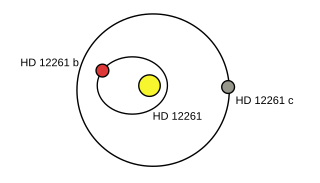 W
WHD 12661 is a G-type main sequence star in the northern constellation of Aries. The star is slightly larger and more massive than the Sun, with an estimated age of seven billion years. It has two known extrasolar planets.
 W
WHD 12661 b is a giant exoplanet two and a half times the mass of Jupiter orbiting around the star HD 12661.
 W
WHD 12661 c is a giant exoplanet one and a half times the mass of Jupiter orbiting around HD 12661.
 W
WIC 167 is a barred spiral galaxy in the constellation of Aries. It was first reported by Bigourdan in 1891 and included in Dreyer's first Index Catalogue.
 W
WIota Arietis is the Bayer designation for a binary star system in the northern constellation of Aries. It has an apparent visual magnitude of 5.117; bright enough to be dimly seen with the naked eye. Parallax measurements made during the Hipparcos mission yield an estimated distance of 520 light-years from Earth.
 W
WKappa Arietis, Latinized from κ Arietis, is the Bayer designation for a binary star in the northern constellation of Aries. The combined apparent visual magnitude of the pair is 5.02, making the system bright enough for it to be dimly visible to the naked eye as a white-hued point of light. It is located approximately 181 light years from the Sun based on parallax, and is drifting further away with a radial velocity of +11.5 km/s.
 W
WLambda Arietis is the Bayer designation for a double star in the northern constellation of Aries. Based upon an annual parallax shift of 25.32 arcseconds, this system is approximately 129 light-years distant from Earth. The pair have a combined apparent visual magnitude of 4.79, which is bright enough to be viewed with the naked eye. Because the yellow secondary is nearly three magnitudes fainter than the white primary, they are a challenge to split with quality 7× binoculars and are readily resolvable at 10×.
 W
WMu Arietis, Latinized from μ Arietis, is the Bayer designation for a star system in the northern constellation of Aries. It is approximately 340 light-years distant from Earth, give or take a 30 light-year margin of error, and has a combined apparent visual magnitude of 5.74. According to the Bortle Dark-Sky Scale, this means it is faintly visible to the naked eye from dark suburban skies.
 W
WNGC 680 is an elliptical galaxy located in the constellation Aries. It is located at a distance of circa 120 million light years from Earth, which, given its apparent dimensions, means that NGC 680 is about 100,000 light years across. It was discovered by William Herschel on September 15, 1784.
 W
WNGC 691 is an unbarred spiral galaxy located in the constellation Aries. It is located at a distance of circa 120 million light years from Earth, which, given its apparent dimensions, means that NGC 691 is about 130,000 light years across. It was discovered by William Herschel on November 13, 1786.
 W
WNGC 694 is a spiral galaxy approximately 136 million light-years away from Earth in the constellation of Aries. It was discovered by German astronomer Heinrich Louis d'Arrest on December 2, 1861 with the 11-inch refractor at Copenhagen.
 W
WNGC 695 is a spiral galaxy located 450 million light years from the Earth, in the constellation of Aries. It has been described as an abnormal galaxy, and has the appearance of "a revolving tornado". Its arms are not tightly held together, and it is interacting with another small astronomical object. Despite its distance of nearly 0.5 billion lightyears, the galaxy's extremely luminous starburst disk, bright IR and UV emissions earned it a spot in the NGC catalogue. VLASS 1.2 survey images indicate the presence of extended radio emission in the core of the galaxy- indicative of either an active SMBH, nuclear starburst, or both.
 W
WNGC 765 is an intermediate spiral galaxy located in the constellation Aries. It is located at a distance of circa 220 million light years from Earth, which, given its apparent dimensions, means that NGC 765 is about 195,000 light years across. It was discovered by Albert Marth on October 8, 1864. The galaxy has an extensive hydrogen (HI) disk with low surface brightness, whose diameter is estimated to be 240 kpc.
 W
WNGC 770 is an elliptical galaxy in the constellation Aries. It is around 120 million light years from the Milky Way and has a diameter of around 36,000 ly. NGC 770 is gravitationally linked to NGC 772. The galaxy was discovered on November 3, 1855 by RJ Mitchell.
 W
WNGC 772 is an unbarred spiral galaxy approximately 130 million light-years away in the constellation Aries.
 W
WNGC 781 is a spiral galaxy in the constellation Aries. It is estimated to be about 154 million light years from the Milky Way and has a diameter of approximately 70,000 light years. NGC 781 was discovered on October 16, 1784 by the German-British astronomer William Herschel.
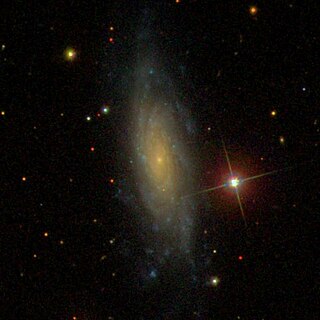 W
WNGC 803 is a spiral galaxy located in the constellation Aries about 70 million light-years from the Milky Way. It was discovered by the German–British astronomer William Herschel in 1784.
 W
WNGC 817 is a spiral galaxy in the constellation Aries.
 W
WNGC 820 is a spiral galaxy located in the constellation Aries about 210 million light-years from the Milky Way. It was discovered by British astronomer John Herschel in 1828.
 W
WNGC 821 is an elliptical galaxy in the constellation Aries. It is estimated to be about 80 million light-years from the Milky Way and has a diameter of approximately 55,000 light years. NGC 821 was discovered on September 4, 1786 by astronomer Wilhelm Herschel.
 W
WNGC 877 is an intermediate spiral galaxy located in the constellation Aries. It is located at a distance of circa 160 million light years from Earth, which, given its apparent dimensions, means that NGC 877 is about 115,000 light years across. It was discovered by William Herschel on October 14, 1784. It interacts with NGC 876.
 W
WNGC 900 is a lenticular galaxy located in the constellation Aries about 430 million light-years from the Milky Way. It was discovered by the German astronomer Albert Marth in 1864.
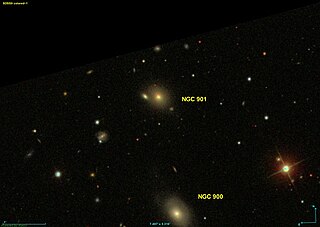 W
WNGC 901 is an elliptical galaxy in the constellation Aries. It is estimated to be 441 million light years from the Milky Way and has a diameter of approximately 50,000 ly. NGC 901 was discovered on September 5, 1864 by Albert Marth.
 W
WNGC 903 is a lenticular galaxy in the constellation Aries. It is estimated to be about 230 million light-years from the Milky Way and has a diameter of approximately 35,000 ly. NGC 903 was on 13 December 1884 by the astronomer Edouard Stephan.
 W
WNGC 904 is an elliptical galaxy in the constellation Aries. It is estimated to be 244 million light years from the Milky Way and has a diameter of approximately 85,000 ly. NGC 904 was on 13 December 1884 by the astronomer Edouard Stephan.
 W
WNGC 918 is a barred spiral galaxy in the constellation Aries about 67 million light years from the Milky Way. It was discovered by John Herschel on Jan 11, 1831.
 W
WNGC 935 and IC 1801 are a pair of interacting galaxies within the Aries constellation. NGC 935 is the northern member of the pair and IC 1801 is the southern.
 W
WNGC 938 is an elliptical galaxy located in the constellation Aries, approximately 184 million light years from the Milky Way. It was discovered by the Prussian astronomer Heinrich d'Arrest in 1863.
 W
WNGC 972 is a dusty spiral galaxy in the northern constellation of Aries, located at an approximate distance of 49.8 Mly from the Milky Way. It was discovered in 1784 by William Herschel. The galactic features suggest it may have undergone a merger with a gas-rich companion, giving it asymmetrical arms, plus starburst activity in the nucleus and an off-planar nuclear ring. The inner 3.6 kpc of the galaxy is undergoing star formation at the rate of 2.1–2.7 M☉·yr−1, but it lacks a nuclear bulge.
 W
WNGC 992 is a spiral galaxy in the Aries constellation and is estimated to be 188 million light years from the Milky Way. NGC 992 was discovered by astronomers Lewis A. Swift on September 6, 1886.
 W
WNGC 1134 is a spiral galaxy in the Aries constellation. It has a highly inclined disk, with respect to the line of sight from Earth. There is a weak outer extension of the spiral structure in this galaxy. It has been listed in the Arp Atlas of Peculiar Galaxies, under the "Galaxies with material ejected from nuclei" section. NGC 1134 is classified as a galaxy with reduced surface brightness, and it possesses a distinct bulge in its centre, as judged by photometric analysis. It has a small and distant companion about 7' to the south.
 W
WNGC 1156 is a dwarf irregular galaxy in the Aries constellation of the type ibm. It is considered a Magellanic-type irregular. The galaxy has a larger than average core, and contains zones of contra-rotating gas. The counter-rotation is thought to be the result of tidal interactions with another gas rich galaxy some time in the past.
 W
WPi Arietis, Latinized from π Arietis, is the Bayer designation for a multiple star system in the northern constellation of Aries. Based upon parallax measurements made during the Hipparcos mission, this system is approximately 800 light-years distant from Earth and has an apparent visual magnitude of 5.21. This is bright enough to be faintly seen with the naked eye.
 W
WRho2 Arietis is an M-type red giant star in the northern constellation of Aries. With an annual parallax shift of 9.28 mas, it is approximately 350 light-years distant from the Earth.
 W
WSigma Arietis, Latinized from σ Arietis, is the Bayer designation for a star in the northern constellation of Aries. It has an apparent visual magnitude of +5.52, which is bright enough for the star to be seen with the naked eye from dark suburban skies. Based upon an annual measured parallax shift of 6.60 ± 0.32 mas, it is approximately 494 light-years distant from the Earth.
 W
WTau1 Arietis, Latinized from τ1 Arietis, is the Bayer designation for a triple star system in the northern constellation of Aries. Based upon an annual parallax shift of 6.41 mas, it is approximately 510 light-years distant from Earth. The combined apparent visual magnitude is 5.27, making it faintly visible to the naked eye.
 W
WTau2 Arietis, Latinized from τ2 Arietis, is the Bayer designation for a binary star in the northern constellation on Aries. The combined apparent visual magnitude of this system is +5.09, which is bright enough to be seen with the naked eye. With an annual parallax shift of 10.27 mas, it is located at a distance of approximately 320 light-years from Earth, give or take a 20 light-year margin of error. At this distance the brightness of the star is diminished by 0.18 in magnitude because of extinction from interstellar gas and dust.
 W
WTeegarden's Star is an M-type red dwarf in the constellation Aries, about 12 light-years from the Solar System. Although it is near Earth it is a dim magnitude 15 and can only be seen through large telescopes. This star was found to have a very large proper motion of about 5 arcseconds per year. Only seven stars with such large proper motions are currently known.
 W
WTeegarden's Star b is an exoplanet found orbiting within the habitable zone of Teegarden's Star, an M-type red dwarf star around 12 light years away from the Solar System. As of July 2019 it has the highest Earth Similarity Index score, with a score of 0.95. Together with Teegarden's Star c, GJ 1061 c, d, Luyten b and Tau Ceti e, it is the fourth-closest potentially habitable exoplanet as of April 2020.
 W
WTeegarden's Star c is a candidate exoplanet found orbiting in the habitable zone of Teegarden's Star, an M-type red dwarf star around 12 light years away from the Solar System. It orbits in a conservative habitable zone around its star. It is fourth closest potentially habitable exoplanet as of July 2019.
 W
WTheta Arietis, Latinized from θ Arietis, is the Bayer designation for a star in the northern constellation of Aries. It is faintly visible to the naked eye with an apparent visual magnitude of 5.58. With an annual parallax shift of 7.29 mas, the distance to this star is an estimated 450 light-years with a 20 light-year margin of error.
 W
WWD 0145+234 is a white dwarf star approximately 95 ly (29 pc) from Earth in the constellation of Aries that has been associated with studies suggesting that a very large exoasteroid near the star was substantially disrupted, resulting in a considerable amount of dust and debris around the star. Studies seem to have captured, for the first time, an exoasteroid breakup around the actual time interval of the disruption event.
 W
WZeta Arietis, Latinized from ζ Arietis, is the Bayer designation for a star in the northern constellation of Aries. It is dimly visible to the naked eye with an apparent visual magnitude of +4.89. Based upon an annual parallax shift of 12.44 mas, the distance to this star is 260 ± 20 light-years. This is an A-type main sequence star with a stellar classification of A1 V. It has a high rate of rotation with a projected rotational velocity of 133 km/s. The star is shining at an effective temperature of 9,500 K, giving it the characteristic white-hued glow of an A-type star.